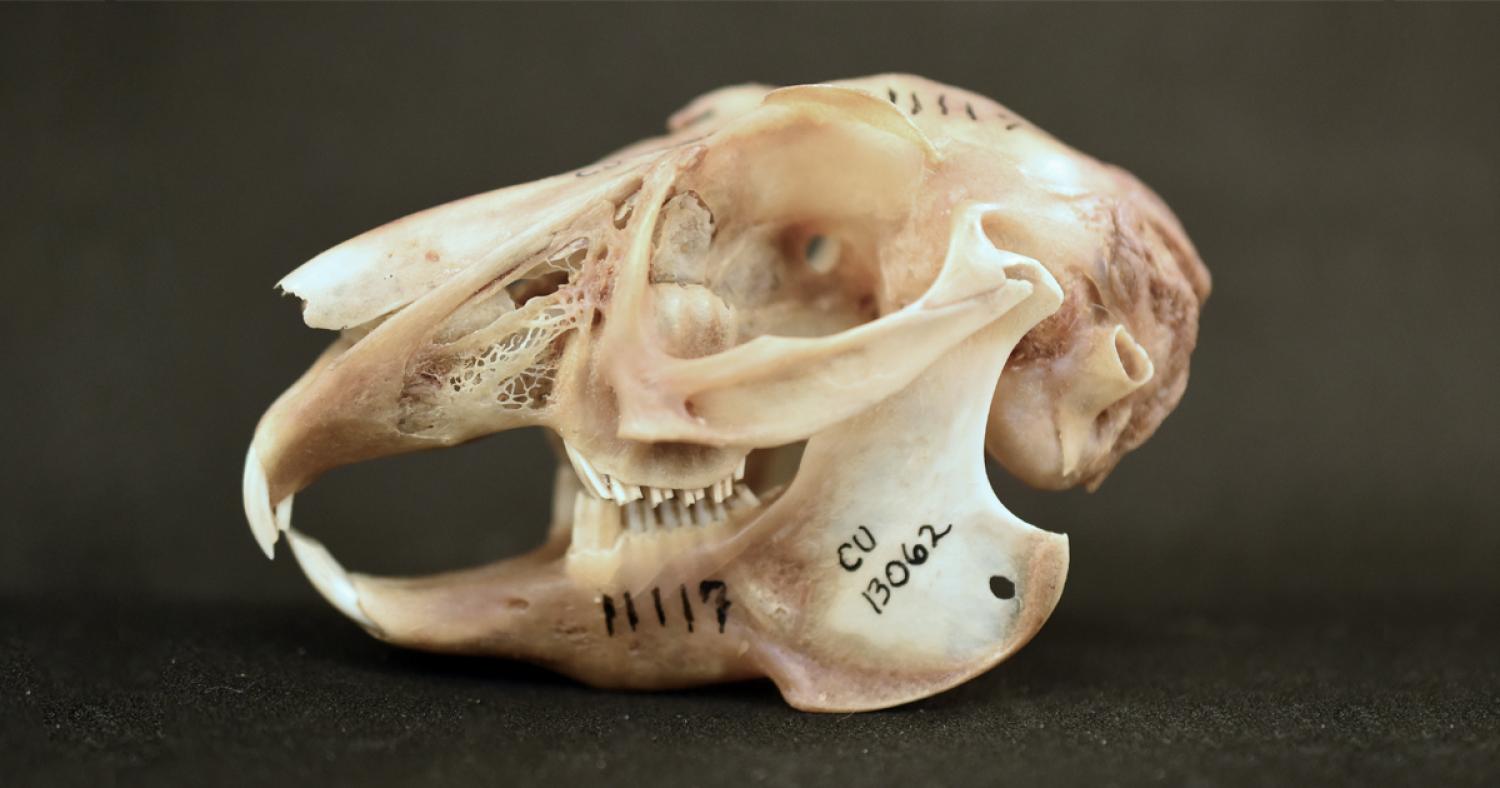Black-tailed Jackrabbit Skull
The black-tailed jackrabbit (also known as an American desert hare) is the most widely distributed hare species, occurring throughout arid regions of the Western U.S. and Northern Mexico. It is found in a variety of habitats, including shrublands, grassland prairies, open woodlands, and croplands, and even inhabits conifer forests reaching up to 10,000 ft in elevation. Oversized ears, prominent long legs and bulging eyes are characteristic of hares, and this species is marked by its black upper tail and ear tips.
Jackrabbits get their name from their facility to run quickly and jump both high and long, with black-tailed jackrabbits reaching speeds of 30 mph and leaps spanning up to 20 ft.
Jackrabbits do not hibernate, migrate or even burrow. Their young, called leverate, are born fully furred with their eyes wide open and can leave the nest within a few hours of birth.
Rabbit and hare skulls are easily identified by the large gap (“diastema”) between the front incisors and cheek teeth, as well as the fenestrated (or windowed) rostrum, which appears as a delicate bone webbing along the side of the snout. Here’s a shocker, this latticework is a specialization that reduces the jarring impacts associated with hopping. First, holes perforating leporid skulls reduce the overall weight of the head, which helps stabilize rabbits and hares under the dynamic loading associated with repeated landing and bounding. Second, the open structure of the snout allows for a complex network of blood vessels and sinuses that can quickly dissipate building fluid and pressure during hopping movements—hydraulics in practice!
Scientific name: Lepus californicus melanotis
Catalogue number: UCM 13062
Collection date: November 28, 1965
Locality: Colorado, Fremont County, 6 miles N of Penrose, 5000’
Collector: J. Ellis
View in database


